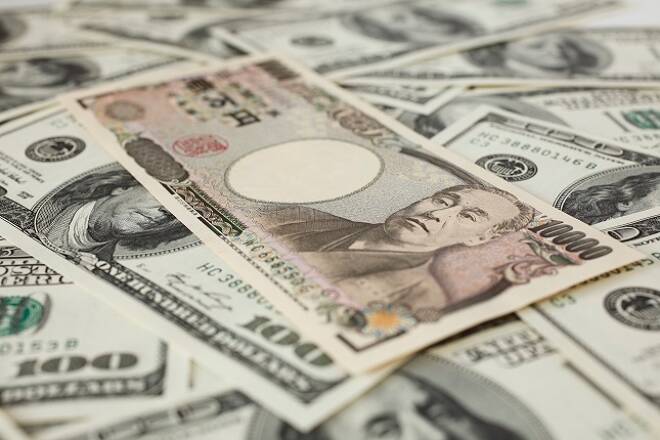Advertisement
Advertisement
Safe-Haven Buying Drives U.S. Dollar to Two-Month High, Yen Also Up on Heightened Volatility
By:
The Dollar/Yen fell last week as stock market volatility and lower Treasury yields helped make the Japanese Yen a more attractive investment. Both the Aussie and Kiwi plunged last week in reaction to a steep drop in global equity markets, especially in China. A drop in the Chinese Yuan to a multi-year low also pressured both currencies.
The U.S. Dollar settled the week higher against a basket of currencies. It was a light week as far as economic releases were concerned with most of the price action fueled by safe-haven buying tied to another week of heightened volatility in the global equity markets.
Safe-haven buying drove the U.S. Dollar Index to a multi-month high as investors sought shelter from another week of losses in global stock markets as well as rapidly rising volatility. Several factors actually contributed to the wild swings in the equity markets including a few earnings disappointments, fear of rising interest rates, a simmering conflict between the European Union and the Italian government, Western criticism of oil power Saudi Arabia after the killing of dissident journalist Jamal Khashoggi, and worries about slowing global economic growth.
The December U.S. Dollar Index settled at 96.128, up 0.685 or +0.72%.
As far as economic news was concerned, Core Durable Goods Orders failed to impress with a 0.1% reading. Traders were looking for a 0.5% increase. Advance GDP came in higher-than-expected at 3.5% versus a 3.3% forecast and 4.2% reading at the end of the second quarter.
Additionally, the Commerce Department said the PCE price index, the Fed’s key measure of inflation, increased by 1.6 percent last quarter, much less than the 2.2 percent increase expected by economists.
A jump in consumer spending was the surprise of the day. Consumer spending, which accounts for more than two thirds of U.S. economic activity, grew by 4 percent in the third quarter, the strongest since the fourth quarter of 2014.
The surge in consumer spending was necessary to help overall GDP expansion because business spending declined 7.9 percent. This was the biggest quarterly decline in business spending since the first quarter of 2016.
Housing data also shook up traders with New Home Sales coming in at 553K versus a 627K forecast. The previous month was also revised lower to 585K.
Japanese Yen
The Dollar/Yen fell last week as stock market volatility and lower Treasury yields helped make the Japanese Yen a more attractive investment.
The USD/JPY settled at 111.895, down 0.639 or -0.57%.
In the economy, All Industries Activity rose 0.5% versus a 0.4% estimate. The previous month was revised lower to -0.2%. Bank of Japan Core CPI was 0.5%, unchanged from the previous month. Tokyo Core CPI was 1.0% as expected. Flash Manufacturing PMI beat the estimate with a 53.1 reading, but the previous month was revised lower to 52.5.
Australian and New Zealand Dollars
Both the Aussie and Kiwi plunged last week in reaction to a steep drop in global equity markets, especially in China. A drop in the Chinese Yuan to a multi-year low also pressured both currencies.
The AUD/USD settled the week at .7087, down 0.0033 or -0.46% and the NZD/USD closed the week at .6521, down 0.0070 or -1.06%.
During the week, RBA Assistant Governor Guy Debelle argued that stable interest rates are a good thing given that they have given businesses and households certainty and confidence to borrow and invest or spend. Debelle also said that the Reserve Bank doesn’t intend to lift rates just to put more gunpowder aside for a possible downturn that may not materialize.
In New Zealand, rising demand for imported goods has pushed the country’s trade balance to its widest deficit for a June year in a decade, Statistics New Zealand said.
The country’s annual trade deficit widened to $4 billion in the June year, from a deficit of $3.66 billion a year earlier, Stats NZ said. Annual imports increased by $6.02 billion to $59.55 billion, while exports rose by $5.65 billion to $55.52 billion.
About the Author
James Hyerczykauthor
James is a Florida-based technical analyst, market researcher, educator and trader with 35+ years of experience. He is an expert in the area of patterns, price and time analysis as it applies to futures, Forex, and stocks.
Did you find this article useful?
Latest news and analysis
Advertisement
